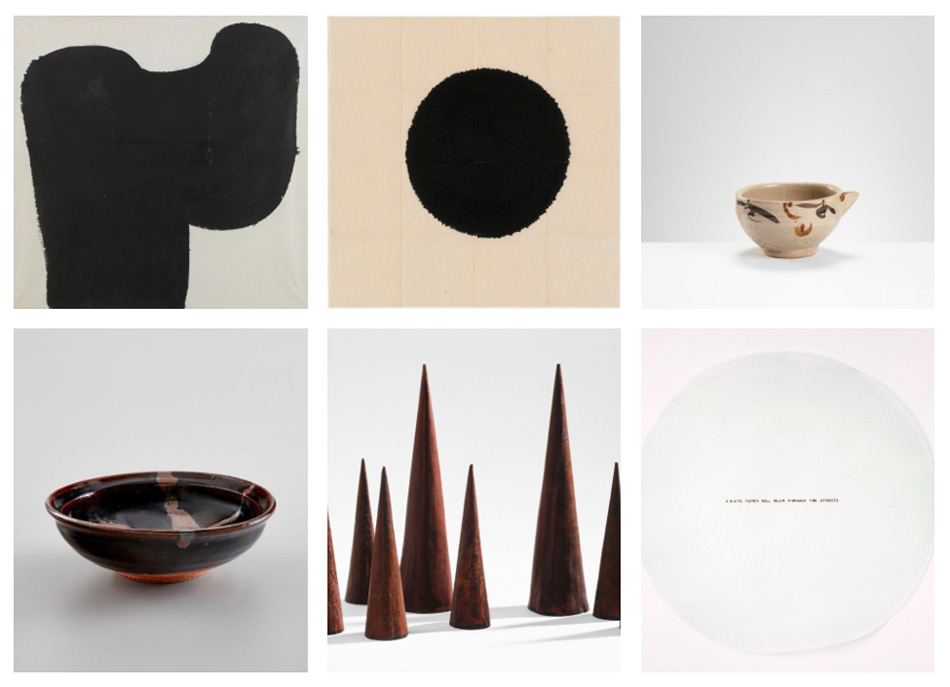James Lee Byars / Shōji Hamada
Michael Werner Gallery, East Hampton
50 Newtown Lane, East Hampton, NY 11937
Opening August 11, 2021
All images copyright and courtesy of the artist(s), estates and Michael Werner Gallery

Michael Werner Gallery present James Lee Byars/Shōji Hamada, an exhibition of early works of paper, stone and wood made in Japan by American artist James Lee Byars (b. 1932, d. 1997) along with ceramic works by world-renowned Japanese potter Shōji Hamada (b. 1894, d. 1978).
James Lee Byars moved to Japan in 1958, living there on and off for the next ten years. Supporting himself by teaching English, Byars studied Japanese art, philosophy and literature, developing a deep passion for Noh theater and Zen that carried over into the rest of his life. In Japan Byars met the artist Morris Graves, who introduced him to a Japanese patron who provided letters of introduction enabling him to study traditional Japanese ceramic and papermaking with various masters.
The years in Japan were incredibly fruitful for the artist. There he developed the idea that a concept alone could be an aesthetic object, which became a theme for the rest of his career. In Kyoto in 1960, he initiated his first group action, with 100 students in a circle reciting lines of Gertrude Stein at the Yukawa Theoretical Institute. His love of ceramic traditions and calligraphy led him to create exhibitions of large ink drawings and performable paper works in a legendary show in 1962 at the National Museum of Modern Art and in 1963-64 at Shōkoku-ji in Kyoto.
Shōji Hamada was the leading figure in the Mingei folk art movement in Japan, advocating the use of traditional techniques in the making of pottery. In 1918 he met Bernard Leach and from 1920-23 traveled to England with him to set up Leach Pottery in St. Ives. Later, he moved back to Japan and created a workshop in Mashiko, where he provided housing and workspace for visiting potters from Japan and abroad. Hamada’s works are in the collections of many of the most important museums of the world and his influence is widely felt. In 1955, he was designated a National Living Treasure by the Japanese government.
It is unknown if Byars and Hamada ever met, but Hamada’s fame and generosity to students of ceramics from around the world would have certainly made him known to Byars. The potter’s adherence to and innovation of traditional pottery making methods would have greatly appealed to the artist.